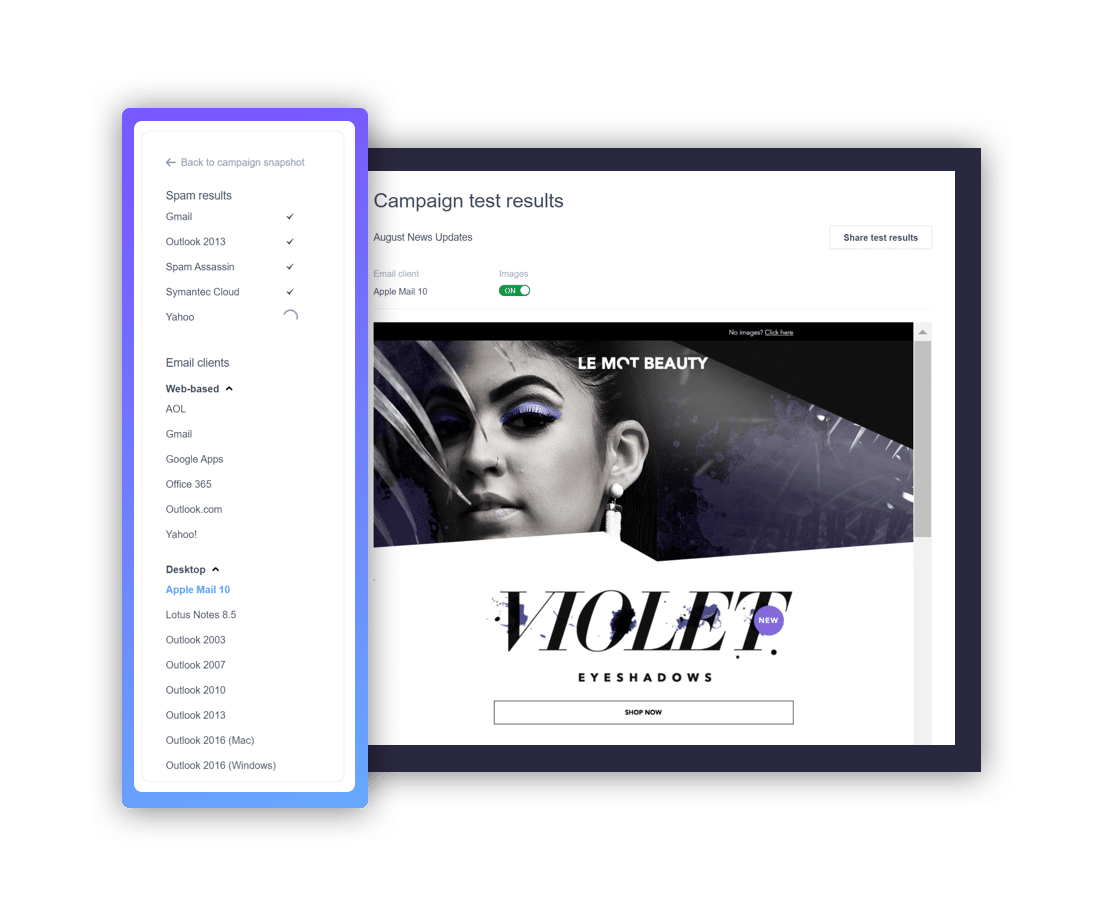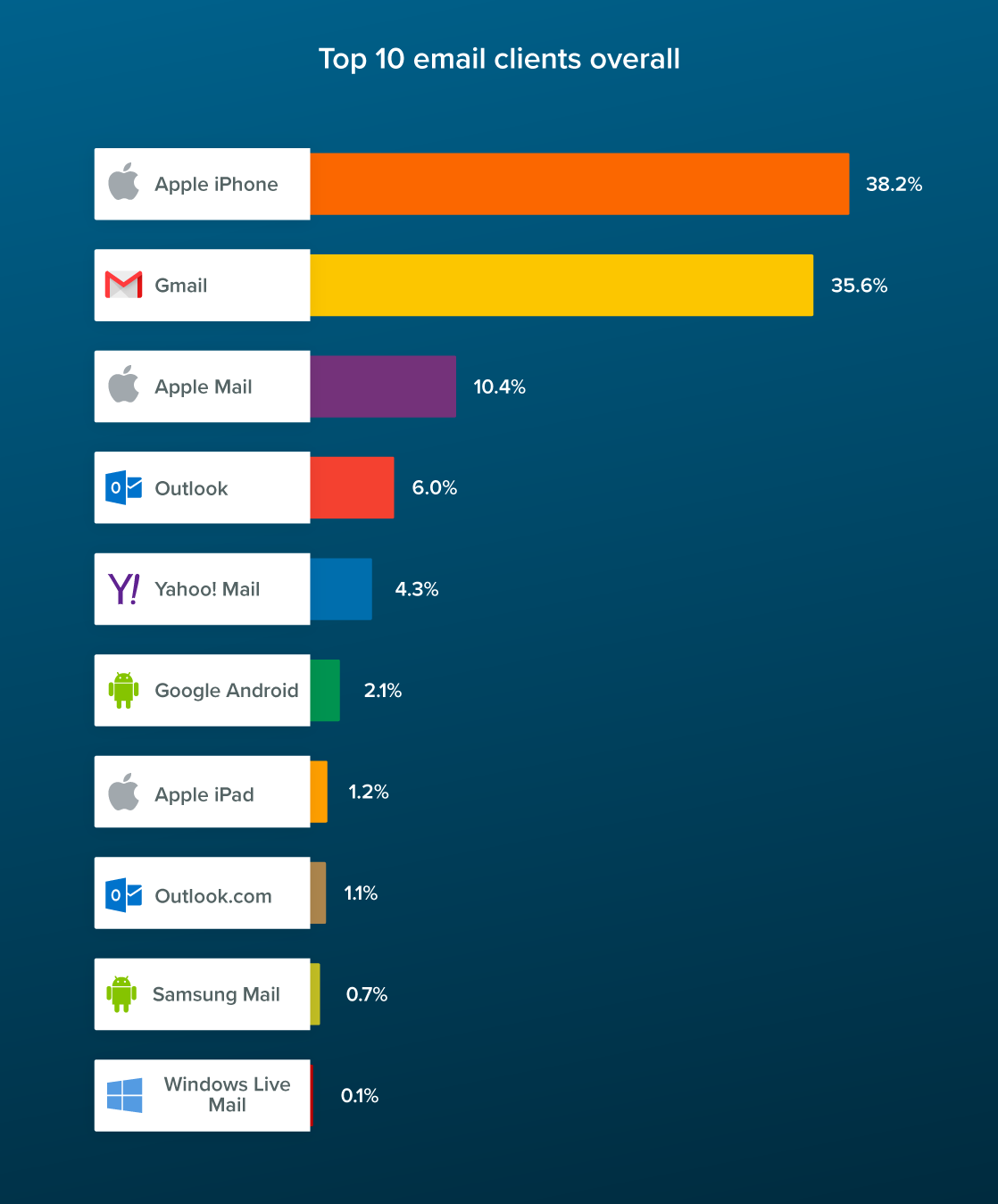As a marketer, you work hard to write great copy and create compelling emails. But if you aren’t writing subject lines that encourage subscribers to read your messages, your campaigns could fall short.
More and more emails are opened on mobile devices, which typically show a smaller number of characters. With this in mind, you may wonder if your subject lines should be shorter to accommodate on-the-go subscribers.
Is there a secret to the perfect subject line length?
Every subscriber list is different, so the perfect subject line length depends on a variety of factors. But it’s possible to get insight into ideal lengths for your industry. Unlock those insights, and you’re bound to see increased engagement and performance from your marketing emails.
In this post, we’ll share some actionable tips for finding the correct email subject line length for your email marketing strategy.
Factors to consider when deciding your email subject line length
There’s really no such thing as a one-size-fits-all length. In fact, the ideal length of your subject line depends on a variety of factors.
1. Which devices and clients your emails are being read on
The number of emails opened on mobile devices has increased dramatically over the last decade. In 2021, mobile accounted for 41.6% of total opens. Yet, somehow, 1 in every 5 emails sent are still not optimized for mobile.
While mobile optimization has more to do with the code or template you’re using, it has implications for your subject line as well. Different devices will truncate your subject lines differently, and if you don’t test for them, you could end up with some painfully awkward results.
Luckily, Campaign Monitor’s Inbox Preview feature enables you to see previews of your email in over 25 different email clients before sending your campaign to ensure your email looks great in any inbox.
When considering the subject line length that will work best for your marketing emails, consider using data to pinpoint subscriber devices. Are most of your subscribers opening emails on mobile, or are they sticking to their desktop?
Campaign Monitor users can easily find this information in your Campaign Monitor account, in the Campaign Reports section under Email Client Usage. This will help you optimize your subject line length.
Here are some 2021 statistics for the top 10 email devices and client including market share:
Since most people are viewing emails on iPhones and Gmail, optimize your subject line length to between 41 characters (portrait view on an iPhone) to 70 characters for Gmail. You don’t want a broken experience because your subject line is too long.
2. How past subject lines have performed
It’s also a good idea to look at which subject lines have garnered high open rates in your past emails.
High open rates can occur because of deals you were offering, the time of day, or the copy and sentiment in the subject line itself.
Still, it’s worthwhile to take a look and see if any trends emerge from your email open rates and the length of the subject line.
So, what is the optimal email subject line length?
According to a study from Marketo, 41 characters, or 7 words, seems to be a sweet spot for email subject line length, which is about 10 characters less than the average subject line.

Here are a few email subject lines paired with their character length to give you an idea of what a 41 character-subject line looks like:
Email Subject Line |
Character Count |
| Work Can Wait – These Sales are THAT Good | 41 |
| Make a Meatless Loaf Even Meat Lovers Will Love | 47 |
| Cyber Monday For Those Procrastinators | 38 |
| 7 Habits That’ll Make You the Leader Your Colleagues Aspire to Be | 65 |
| 5 SEO Trends for 2019 | Mobile vs. Desktop Search | Win/Loss Analysis | SMB Expectations | 88 |
As you craft your email subject lines, remember when and how your subscribers are reading your emails.
If the majority of the opens are happening on iPhones, you’ll want to use shorter email subject lines to get the most impact. Additionally, keep your offer or CTA at the beginning of your subject line where it’s most likely to be seen. You can also use preheader text to add more context to your subject lines in the preview pane.
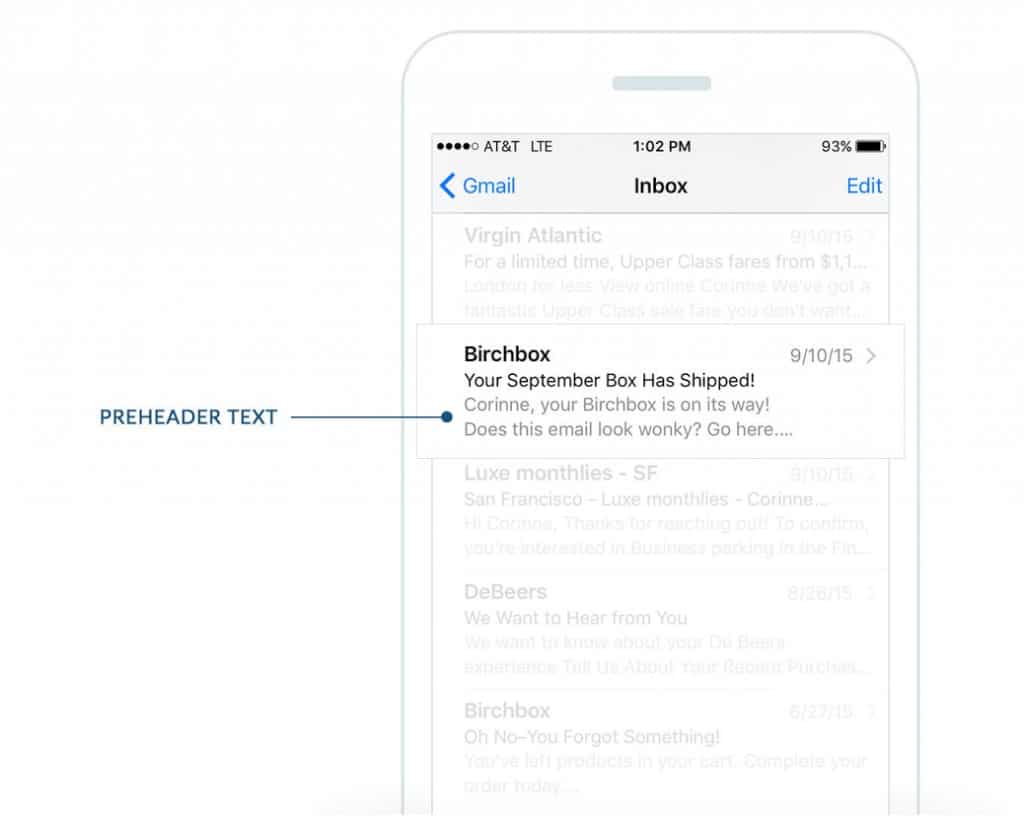
9 email subject line best practices to utilize
Finding the ideal length for a subject line is an important step in your email marketing, but subject lines are not just about length. In order to see success, you’ll need to leverage general best practices.
1. Use different subject lines
If you use the same subject line over and over, it won’t excite your subscribers. So, rather than using “January 2021 company newsletter”, try to get more creative and encourage subscribers to open emails and see the latest and greatest information you have to offer.
2. Keep subject lines short
Short subject lines tend to win out. As discussed above, research shows around 41 characters is the optimal length for a subject line. Still, some marketing experts suggest going even shorter.
Backlinko founder Brian Dean says subject lines which on average do not exceed 16 characters have significantly higher open rates. He attributes this to two factors.
First, emails with shorter subject lines are more likely to be delivered. Second, brevity creates an air of mystery.
Per Dean’s thinking, the subject line “Are you available to meet today at 11?” (38 characters) doesn’t have quite the same impact as “Meeting at 11?” (14 characters).
All in all, keep your character count low when you can. And, imposing character limits for people sending email at your company could be a wise decision, too.
3. Test your subject lines across devices and clients
Like we mentioned earlier, you’ll want to make sure your subject lines display properly across devices. Sending test emails will help you make sure that your subject line reads well anywhere.
4. Consider your capitalization style
While you may not be giving much thought to how you’re capitalizing your email subject lines, you should be! There are four basic styles:
- How to write an email subject line (sentence case)
- How to Write an Email Subject Line (title case)
- how to write an email subject line (all lowercase)
Some marketing experts such as Val Geisler attribute increased open rates to a more casual, personal feel. In that case, you might opt for sentence case or all lowercase for your subject lines.
5. Use personalization
Use personalization right in the subject line by including subscriber names. You can use many other personalization options based on subscriber data. This data can be collected through your sign-up form, or from other sources like Shopify or OptinMonster.

This is a powerful subject line because it’s short, asks a question, and ties to previous recipient behavior. Consider doing the same with your emails.
6. A/B test subject lines
You’ll never know what works best without trying different options, so A/B test your subject lines to find the best one. You can A/B test different lengths and different types of copy to get a good idea of what your email list responds to.
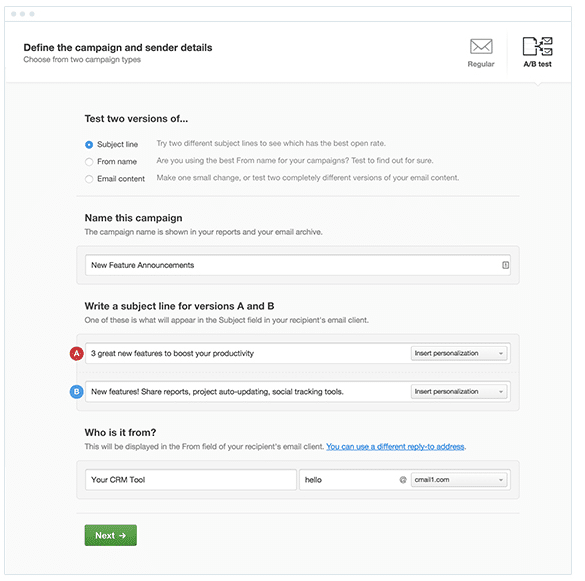
7. Use emojis when appropriate
While the debate about emojis continues, the fact is they’re here to stay. Their judicious use in subject lines can set your emails apart in an inbox with seemingly endless stacked lines of text.
There are additional advantages provided by emojis. A majority of companies do not use them, and this may contribute to the higher response rate for emails that employ them. Plus, they create powerful emotive storytelling, perfect for the shorter lines of text on mobile devices.
8. Avoid spam filters
Every email which winds up in a spam folder is a missed opportunity for an open, clickthrough, and sales conversion. That’s why, according to extensive research was done by Yesware, you want to avoid using the following words in subject lines.
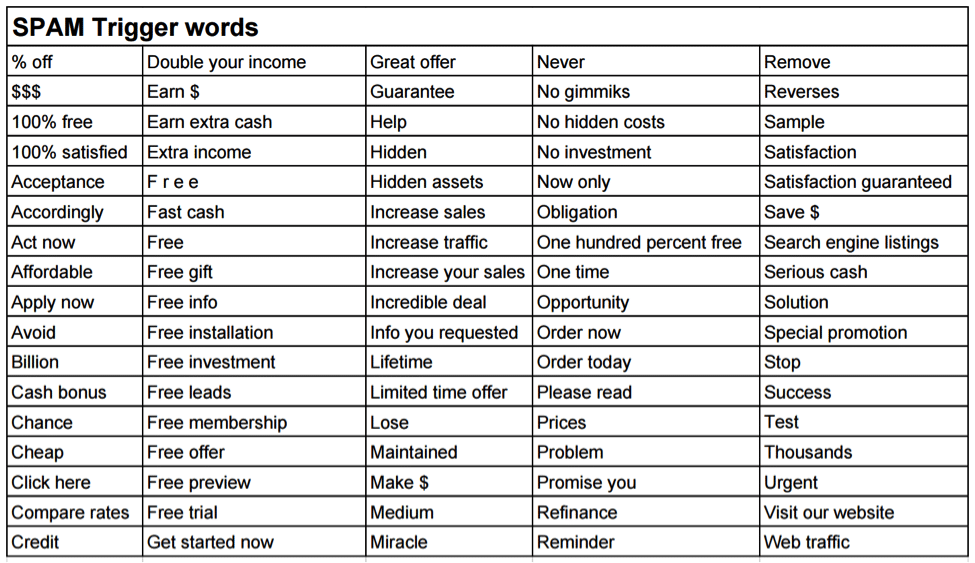
There’s more to avoiding spam filters than word choice alone. (Using all capital letters will take you there, too.) No matter what, delete the spammy words and phrases above from your subject lines.
9. Use automation
Though this isn’t strictly related to subject lines, it’s worth noting that using automation in your email strategy is bound to increase your engagement metrics. Even simple automation steps like a welcome journey are effective ways to grab your subscribers’ list at the time they’re most engaged.
If you can play off of the timing or context of your automated email in your subject lines, then your results will only get better.
Wrap up
At the end of the day, the best email subject line length will vary from brand to brand. That means it’s best to test out different lengths to see what works for you.
If you leverage your past data and test your subject lines, you’ll be well on your way to knowing how long email subject lines should be to encourage subscribers to open and take action with your campaigns.
For more tips on writing email subject lines, check out our post on subject line best practices.

